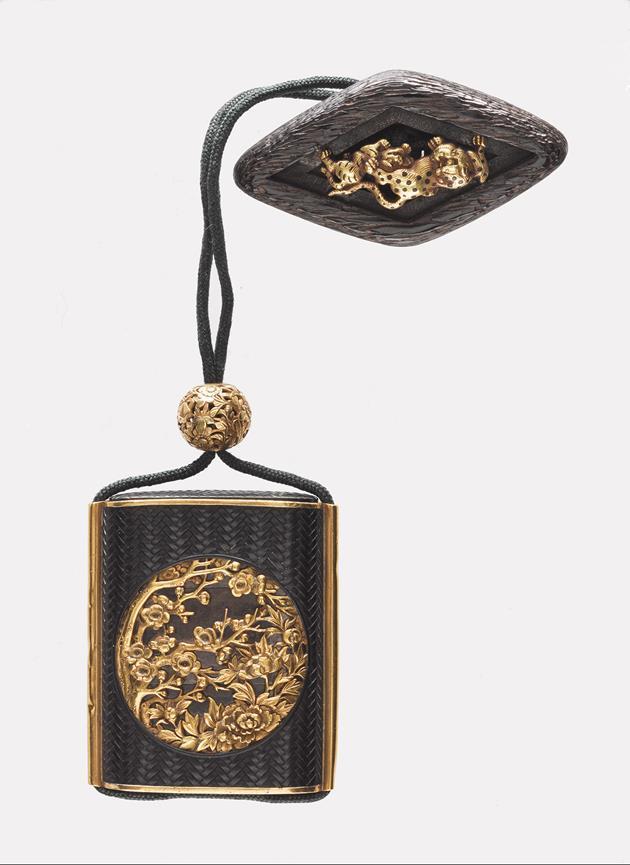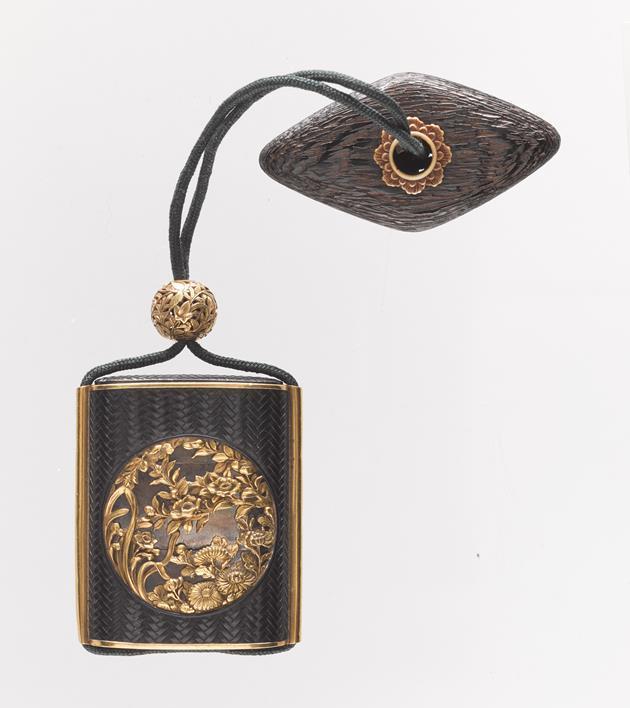Inro with floral designs, ojime, and netsuke
18th-early 19th century
Inro are containers for small personal items such as seals and herbal medicines. Japanese men of the Edo period (1603–1868) wore them hanging on the obi (sash) of their kimono. The small bead called ojime tightens the inro’s cord. Netsuke, intricately carved toggles, were attached at the end of the cord to prevent the inro from slipping through the obi. By the eighteenth century, both inro and netsuke had become more elaborate and decorative and were commissioned by merchants, samurai, and others who could afford them.
Bronze, silver, wood, gold, and ivory
Inro: 1 1/8 x 2 1/8 in. x 5/8 in.
Netsuke: 1 7/8 x 1 5/16 x 7/16 in.
Ojime: Diameter.: 7/16 in.
Duncan MacTavish Fuller Memorial Collection
33.320
Photo: Elizabeth Mann


